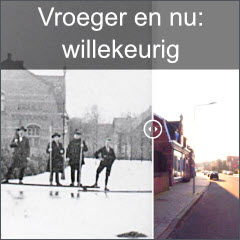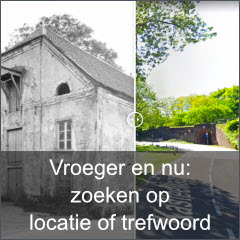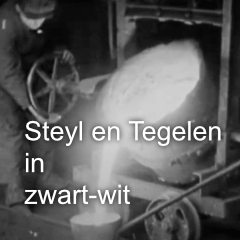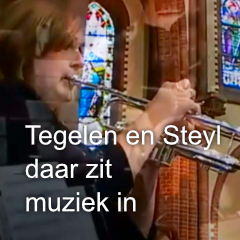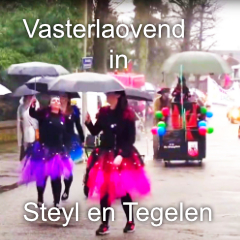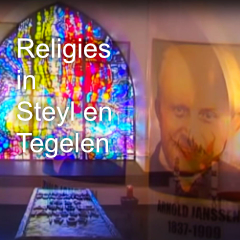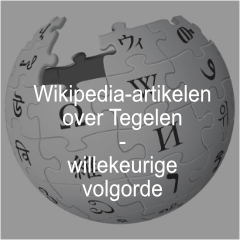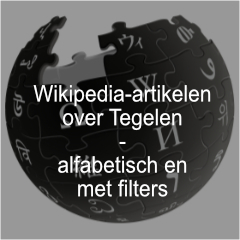Anselmus Boëtius de Boodt: verschil tussen versies
Geen bewerkingssamenvatting |
k Linkfix, replaced: [[Voorouder (verwantschap) → [[Voorouder met AWB |
||
| Regel 18: | Regel 18: | ||
== Werken == |
== Werken == |
||
* ''Gemmarum et lapidum historia<ref>Gemmarum et Lapidum Historia, Qua non solum Ortus, Natura, Vis & Precium, sed etiam Modus quo exiis, Olea, Salia, Tinctura, Essentia, Arcana & magisteria Arte Chymica confici possint, ostenditur. |
* ''Gemmarum et lapidum historia<ref>Gemmarum et Lapidum Historia, Qua non solum Ortus, Natura, Vis & Precium, sed etiam Modus quo exiis, Olea, Salia, Tinctura, Essentia, Arcana & magisteria Arte Chymica confici possint, ostenditur. |
||
Informatie over dit werk: |
Informatie over dit werk: |
||
The book contains 31 woodcuts in the text, & two large folding printed tables. The work was printed in Hanau in 1609 by the firm of Wechel. "In his Gemmarum et Lapidum Historia Boodt made the first attempt at a systematic description of minerals, dividing the minerals into great and small, rare and common, hard and soft, combustible and incombustible, transparent and opaque. He uses a scale of hardness expressed in three degrees and notes the crystalline forms of some minerals (triangular, quadratic, and hexangular). Boodt criticizes some of the views of Aristotle, Pliny, Paracelsus, and others. De Boodt also mentions atoms. He enumerates about 600 minerals that he knows from personal observation, and describes their properties, values, imitations, and medical applications. There are also tables of values of diamonds according to their size and a short description of the polishing of precious stones. Boodt cites nineteen authors and, besides the minerals known to him, gives a list of 233 minerals whose names he knows from Pliny and Bartholomeus Anglicus, among others."D.S.B., II, p. 293. |
The book contains 31 woodcuts in the text, & two large folding printed tables. The work was printed in Hanau in 1609 by the firm of Wechel. "In his Gemmarum et Lapidum Historia Boodt made the first attempt at a systematic description of minerals, dividing the minerals into great and small, rare and common, hard and soft, combustible and incombustible, transparent and opaque. He uses a scale of hardness expressed in three degrees and notes the crystalline forms of some minerals (triangular, quadratic, and hexangular). Boodt criticizes some of the views of Aristotle, Pliny, Paracelsus, and others. De Boodt also mentions atoms. He enumerates about 600 minerals that he knows from personal observation, and describes their properties, values, imitations, and medical applications. There are also tables of values of diamonds according to their size and a short description of the polishing of precious stones. Boodt cites nineteen authors and, besides the minerals known to him, gives a list of 233 minerals whose names he knows from Pliny and Bartholomeus Anglicus, among others."D.S.B., II, p. 293. |
||
Some of the fine woodcuts illustrate polishing machinery. There are nine chapters on the properties and uses of the magnet and lodestone. |
Some of the fine woodcuts illustrate polishing machinery. There are nine chapters on the properties and uses of the magnet and lodestone. |
||
Literatuur: Adams, The Birth and Development of the Geological Sciences, p. 161"The most important lapidary of the seventeenth century and exerted a widespread influence." Partington, II, pp. 101-02. Sinkankas 778. Thorndike, VI, pp. 318-24. Wheeler Gift Cat. 120 & 120a(later eds.).</ref>'' (1609) |
Literatuur: Adams, The Birth and Development of the Geological Sciences, p. 161"The most important lapidary of the seventeenth century and exerted a widespread influence." Partington, II, pp. 101-02. Sinkankas 778. Thorndike, VI, pp. 318-24. Wheeler Gift Cat. 120 & 120a(later eds.).</ref>'' (1609) |
||
| Regel 47: | Regel 47: | ||
==Trivia== |
==Trivia== |
||
*[[Voorouder |
*[[Voorouder]] van [[August De Boodt]]. |
||
== Externe link == |
== Externe link == |
||
Versie van 22 mei 2016 11:08

Anselmus de Boodt (Brugge, rond 1550 - 21 juni 1632), met zijn Latijnse naam Boetius of Boëtius, was een Vlaamse humanist, kanunnik (als leek), bestuurder, arts en geleerde.

Levensloop
De in een rijke en aristocratische katholieke familie geboren Anselmus studeerde rechten in Leuven en medicijnen bij Thomas Erestus in Heidelberg. Hij promoveerde in Padua tot doctor in de geneeskunde. Tussen 1580 en 1583 was Boëtius raadpensionaris van Brugge.
In 1583 werd hij lijfarts van Wilhelm Rosenberg, burggraaf en gouverneur van Praag. In deze stad werd hij in 1584 lijfarts van de aldaar residerende keizer Rudolf II, als opvolger van Rembert Dodoens. De keizer bezorgde Boëtius als leek een prebende van kanunnik van de Sint-Donaaskathedraal in Brugge. Aan het prachtlievende en zeer in wetenschap geïnteresseerde hof van Praag hield Boëtius zich bezig met alchemie en mineralogie.
In 1612 kwam hij naar zijn geboortestad terug. Hij werd onmiddellijk benoemd tot raadspensionaris van Brugge, een positie die hij behield tot aan zijn dood.
In de 16e eeuw was er geen strikte scheiding tussen de wetenschappelijke disciplines en werden ook wetenschap en bijgeloof (zoals astrologie) nog naast elkaar beoefend.
In zijn hoofdwerk Gemmarum et lapidum historia, een systematische studie van (edel)stenen en mineralen, beschreef Boëtius zeshonderd stenen en hun -veronderstelde- ontstaan, eigenschappen en geneeskundige uitwerking. Hij was een aanhanger van de atoomleer en werkte met een schaal van hardheid. Het boek gaat ook in op praktische zaken als slijpwijze en de economische waarde van edelstenen.
Werken
- Gemmarum et lapidum historia[1] (1609)
- Le Parfaict Ioaillier, ou Histoire des Pierreries (1644)
- De la Pierre de Crapaut, ou Garatroine (over onder andere de raadselachtige paddesteen)
- Pseudodoxia Epidemica (over bijgeloof).
- Symbola divina et humana (1603)
- De Baene des Deugds (1624)
- De Baene des Hemels ende der Deugden (1628)
- Florum herbarum ac fructuum selectiorum icones et vires, pleraeque hactenus ignotae, postuum uitgegeven in 1640 door Vredius.
Literatuur
- Nieuw nederlandsch biografisch woordenboek, deel VI
- G. Dewalque, Biographie Nationale de Belgique, deel IV
- F.M. Jaeger, Anselmus Boëtius de Boodt', in: Historische Studien. Bijdragen tot de kennis van de geschiedenis der wetenschappen in Nederlanden (in 16th and 17th centuries), Groningen, 1919
- O. Delepierre, Biographie des hommes remarquables de la Flandre occidentale, deel 1 (Brugge 1843-1844)
- J.E. Heller, 'Anselmus Boetius de Boodt als Wissenschafter und Naturphilosoph', Archeion 15 (1933).
- 'Testament olographe d'Anselmus Boetius de Boodt, conseiller-pensionnaire de Bruges, 1630', in: Annales de la societe d'emulation de Bruges, 2e serie, deel 11 (1861)
- A.J.J. Van de Velde, Rede af Boodt, in: Koninklijke Vlaamsche Academie voor Wetenschappen, Letteren en Schoone Kunsten van België. Klasse der Wetenschappen. Verslagen en Mededeelingen (Brussel, november 1932)
- J.E. Heller, Quellen und Studien zur Geschichte der Naturwissenschaften und der Medizin, deel 8 (1942).
- Marie-Christiane De Boodt-Maselis, Anselmus Boetius De Boodt (1550-1632). Brugs humanist aan het Hof van Oostenrijk, in: Vlaanderen, 289, Tielt, 2002.
- M.-C. Maselis, A. Balis, R.H. Marijnissen, 'De albums van Anselmus De Boodt (1550-1632), Geschilderde natuurobservatie aan het Hof van Rudolf II te Praag' (1989), Lannoo, Tielt
- M.-C Maselis, Anselmus Boetius de Boodt, Een Vlaams Humanist met Europese Faam (1981), Uitgave Familia et Patria, Handzame.
- M.-C Maselis, Reproductie van het kruidboek (1640) Anselmus de Boodt met Nederlandstalige vertaling (1981), Uitgave Familia et Patria, Handzame.
Trivia
- Voorouder van August De Boodt.
Externe link
- ↑ Gemmarum et Lapidum Historia, Qua non solum Ortus, Natura, Vis & Precium, sed etiam Modus quo exiis, Olea, Salia, Tinctura, Essentia, Arcana & magisteria Arte Chymica confici possint, ostenditur. Informatie over dit werk: The book contains 31 woodcuts in the text, & two large folding printed tables. The work was printed in Hanau in 1609 by the firm of Wechel. "In his Gemmarum et Lapidum Historia Boodt made the first attempt at a systematic description of minerals, dividing the minerals into great and small, rare and common, hard and soft, combustible and incombustible, transparent and opaque. He uses a scale of hardness expressed in three degrees and notes the crystalline forms of some minerals (triangular, quadratic, and hexangular). Boodt criticizes some of the views of Aristotle, Pliny, Paracelsus, and others. De Boodt also mentions atoms. He enumerates about 600 minerals that he knows from personal observation, and describes their properties, values, imitations, and medical applications. There are also tables of values of diamonds according to their size and a short description of the polishing of precious stones. Boodt cites nineteen authors and, besides the minerals known to him, gives a list of 233 minerals whose names he knows from Pliny and Bartholomeus Anglicus, among others."D.S.B., II, p. 293. Some of the fine woodcuts illustrate polishing machinery. There are nine chapters on the properties and uses of the magnet and lodestone. Literatuur: Adams, The Birth and Development of the Geological Sciences, p. 161"The most important lapidary of the seventeenth century and exerted a widespread influence." Partington, II, pp. 101-02. Sinkankas 778. Thorndike, VI, pp. 318-24. Wheeler Gift Cat. 120 & 120a(later eds.).
